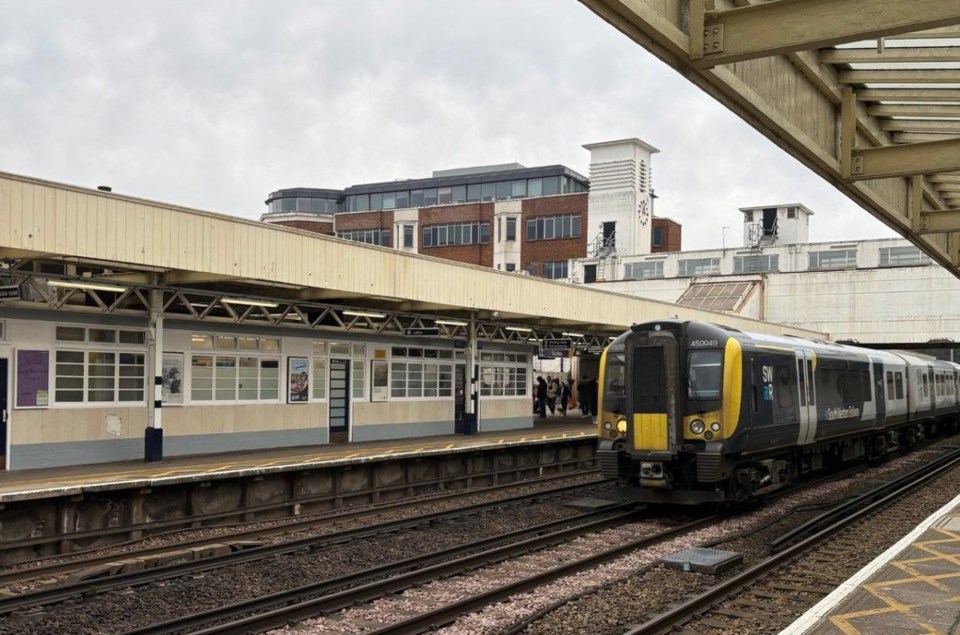Does your heart sing when you think of a future Alberta crisscrossed with passenger trains joining mountains to airports to suburbs to city centres to regional outposts?
Perhaps you’re more of a train's-on-time, get-to-work-by-nine kind of person. Or you think the subject has no wheels at all.
Regardless, the government wants you to help it join the dots as it draws a map of future rail service for the travelling public.
Albertans have until April 15 to take an online survey informing the province’s creation of a master plan for passenger rail. Although the plan will focus on the first 15 years of development, public engagement that includes the survey will help set the stage for decades and generations into the future, the government says.
The province is looking at what should go where, how the service should be sequenced and even who should pay for what.
Originally set to conclude before last Christmas, the survey covers city-to-city, regional, commuter and high-speed services.
But what are you getting into when you take the survey?
Supposedly you’ll need to set aside 15 to 20 minutes, although not all at once if you sign in to an account. But keep in mind that there’s one open question near the end. And many questions include a selection called “other” where you’ll need to get specific.
Some questions ask how much you support or don’t support specific statements, from strongly agree to strongly disagree — plus a spot for unsure.
A handful are demographic and many are multiple choice. But you won’t be forced into annoying one-answer-fits-all situations, because “select all that apply” appears often.
A wide range of topics are covered. How much should train travel cost? Who should pay discounted fares?
Is getting ski holidayers from the two largest airports to the mountains more important than connecting commuters and seniors in, say, Airdrie or Stony Plain to their city jobs and medical appointments?
And how important are hubs for the heartland that make trains more accessible to the third of the provincial population beyond the two major metropolitan areas?
If you think the survey is pointing you too much in a particular direction, remember that there’s that spot for comments – even long ones – near the end.
In a recent interview, Devin Dreeshen, the transportation minister, stressed that the master plan is an early stage of how public transportation unfolds in the coming decades.
He compared some aspects of the survey to early mentions in the 1950s of ring roads for Alberta cities. Decades later, the Progressive Conservatives of Peter Lougheed started buying land for a Calgary ring road and utility corridor.
“I think a lot of this is going to have short, kind of immediate planning, engineering and construction dollars on certain projects. And then I would assume that other parts of it are going to have that longer-term view of when they would be economically viable,” said Dreeshen, the member for Innisfail-Sylvan Lake.
Sequencing and timing are important and need to be balanced with population growth, Dreeshen said, with train stations and the land-planning around them serving as residential and business catalysts.
The survey has qualified support from the NDP. Lorne Dach, the transportation critic, called it “a good start.”
But proof of the survey’s value will come in how the government frames and reacts to results, Dach said in a recent interview.
“Consultation is always key when you're talking about major infrastructure projects that are long term. The rail survey is just the very beginning and a lot of things need to be determined,” he said.
“But I’m certainly interested to hear what Albertans think about the initiatives the government is talking about, what the final conclusions are, and how those conclusions match the questions that have been asked, so we can see if the outcomes are reliable.”
Dach, the member for Edmonton-McClung, added that making sure bus service is better developed in rural Alberta should start now.
Busing in Alberta took a major hit in 2018 when Greyhound ceased operating in the West. The company shut down Canadian service completely in 2021.
Regional services haven’t taken hold in a broad way since then and they need government involvement, Dach said.
The government plans to follow up the survey with regional open houses. Aspects of the plan could be reflected in next year’s budget.
Go to alberta.ca/passenger-rail-engagement to take the 34-question survey.
And then perhaps everyone will sing from the same page — at least when it comes to passenger rail.



